311th (City of Bristol) Heavy Anti-Aircraft Regiment, Royal Artillery
The 1st Wiltshire Battery, Royal Field Artillery, and its successors were part-time Territorial Force units of the British Army from 1908 to 1950. It carried out garrison duties in India during World War I and saw active service in the Third Afghan War. It served in various units in the interwar years, finally becoming a full regiment (as 112th (Wessex) Field Regiment) in time for World War II. It saw action with 43rd (Wessex) Infantry Division in the campaign in North West Europe, including Operations Epsom, Jupiter and Bluecoat in Normandy, the crossing of the Seine, the battle for Arnhem (Operation Market Garden) in the Low Countries, and then Operations Clipper, Blackcock, Veritable and Plunder across Germany. Its short-lived postwar successor unit had little or no Wiltshire connection.
When the TA was reformed on 1 January 1947 the regiment was revived as 312 (Wessex) Medium Regiment. The new regiment was based at Bristol and had little or no Wiltshire connection. It formed part of 90 (Field) Army Group RA. Later the regiment was merged on 30 August 1950 into 498 (Gloucestershire) Heavy Anti-Aircraft Rgt as 312 (Gloucestershire) HAA Rgt, and on 10 March 1955, this in turn became a single Bristol-based battery in 311 (City of Bristol) HAA Rgt.
The City of Bristol Rifles was a Volunteer unit of the British Army from 1859 to 1955. It became a battalion of the Gloucestershire Regiment and fought in France, Flanders and Italy in World War I. As a searchlight unit in World War II it defended the West Country against air raids before moving to the East Coast late in the war. It continued in the postwar Territorial Army (TA) as a heavy anti-aircraft artillery regiment until amalgamated with other Gloucestershire units in 1955.
When the TA was reconstituted on 1 January 1947, 66th S/L Rgt was reformed as 601st (City of Bristol) (Mixed) Heavy Anti-Aircraft Regiment, Royal Artillery ('Mixed' indicating that members of the Women's Royal Army Corps were integrated into the unit). Now equipped with HAA guns rather than S/Ls it formed part of Bristol-based 72 AA Bde (the wartime 46 AA Bde).
When AA Command was disbanded on 10 March 1955 there were wholescale mergers among its subordinate units: 601 (City of Bristol) HAA Rgt amalgamated with 312th (Gloucestershire) and 266th (Gloucestershire Volunteer Artillery) HAA Rgts to form 311th (City of Bristol) Heavy Anti-Aircraft Regiment, Royal Artillery, to which it contributed R (City of Bristol) Bty.
On 1 May 1961 there was a further reorganisation: part of the regiment merged with 883 (Bristol) Locating Bty to form 883 (Gloucestershire Volunteer Artillery) Locating Bty, while R Bty reverted to infantry and merged with two companies of 5th Gloucesters, retaining the City of Bristol title. Despite several further mergers, B Company of 2nd Bn Royal Gloucestershire, Berkshire and Wiltshire Regiment kept its 'City of Bristol' subtitle until the battalion was amalgamated in 1999.
Although the City of Bristol lineage was discontinued, the regiment's successors, 6th (V) Btn, The Rifles maintains No.3 (Rifle) Platoon of A Company, based in Gloucester, in the City of Bristol at HMS Flying Fox.
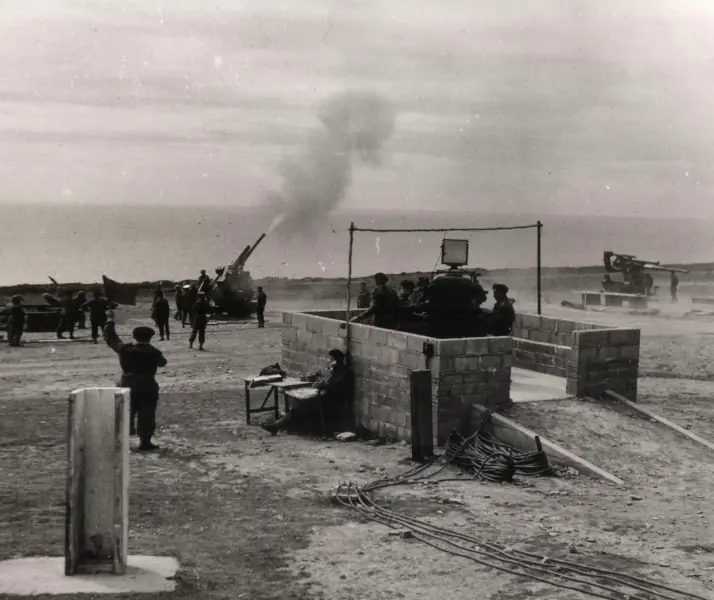
Cleave Camp live firing, Bude 1950s
In the above photo note the Kerrison Predictor, one of the first fully automated anti-aircraft fire-control systems, which used a very large generator to power the system.
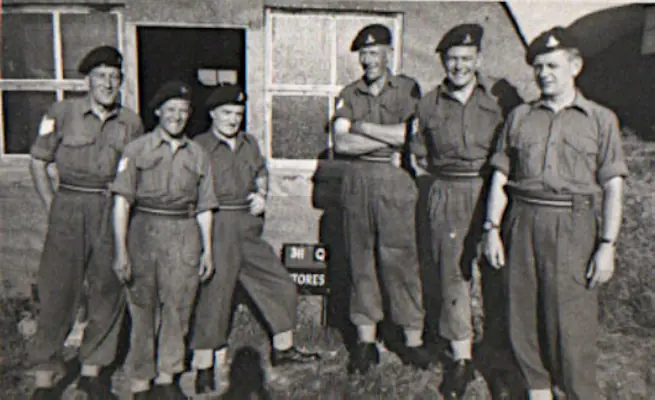
311 RegimentQ stores
In the above photo we beieve that the 3rd from the left is N. Webber. We have no idea who the other soldiers are or where the photo was taken.
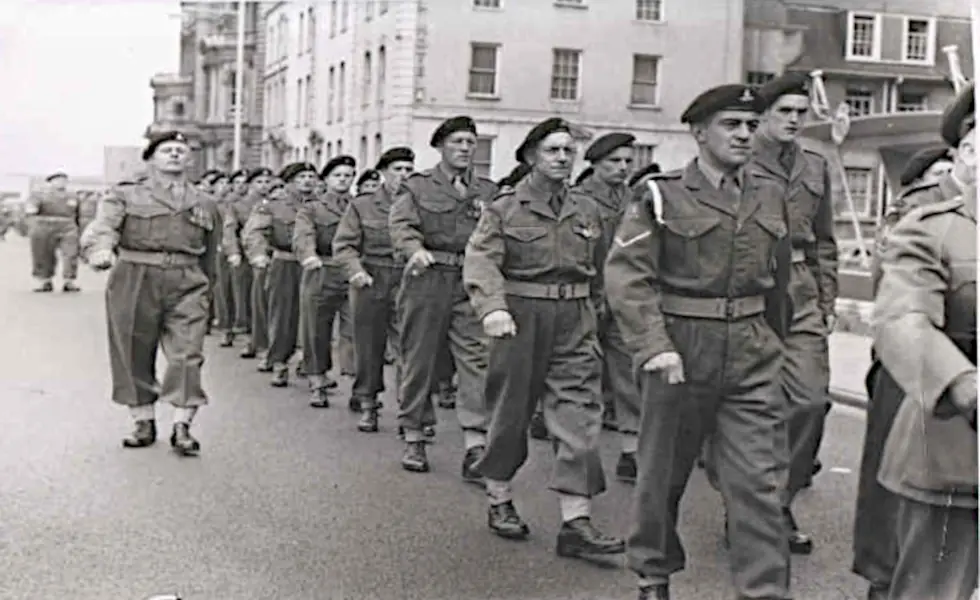
311 or 312 Regiment, 1953
It is believed the above photo is of 311 or 312 Regiment on its way to church service for the Queen's Coronation in 1953. The men are not wearing white Lanyards, but the L/Bdr is. White plaited lanyards were introduces again in the 1950s for a short time. Bristol Cathedral is to the right of the men and there is some kind of structure on the grass frontage of the Cathedral. On the structure is what appears to be a oval shield with a crown on the apex. Perhaps it is the Territorial Army badge? The building behind the men is now the Marriott, Swallow Hotel. Battle Dress Uniform (BDU) went out of service in the 1960s.
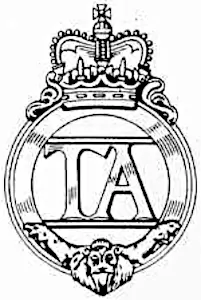
Territorial Army badge
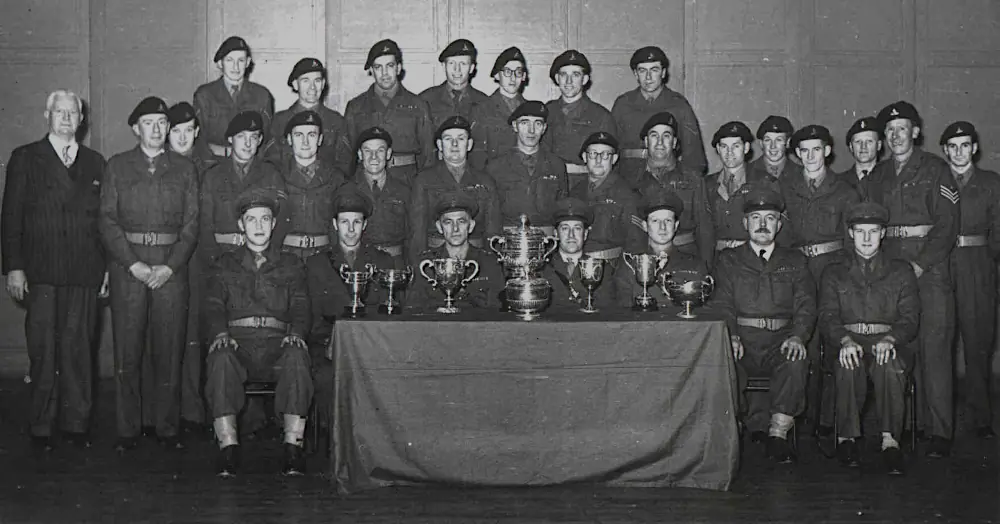
311 Regiment, Q Battery, Bristol, March 1956
In the above photo we beieve that in the back row, the 2nd from the left is M Wandless and that the 5th from the left is Mike Hambly.
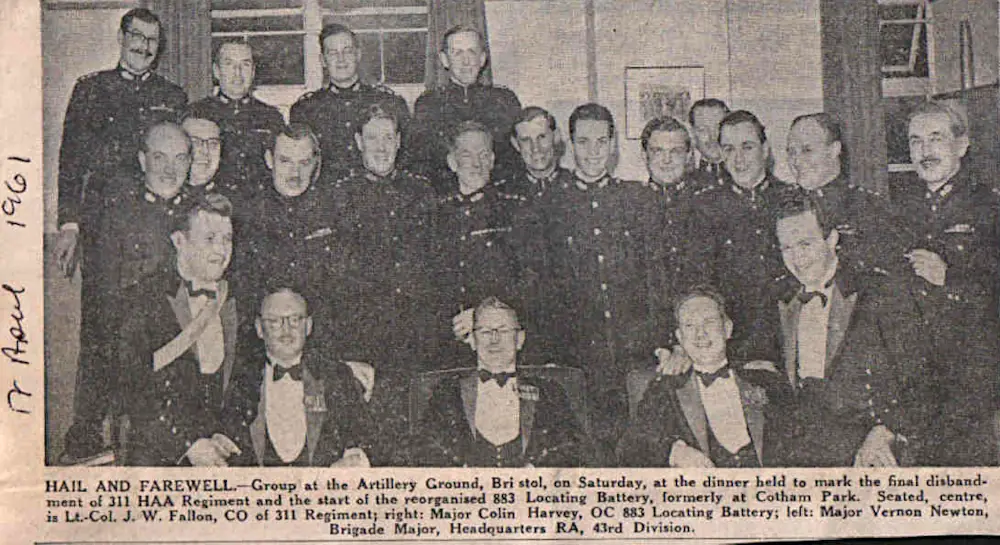
Disbandment of 311 Regiment
The text in the above newspaper clipping from 17 April 1961 reads:
Hail and Farewell - Group at the Artillery Ground, Bristol, on Saturday, at the dinner held to mark the final disbandment of 311 HAA Regiment and the start of the reorganized 883 Locating Battery, formerly at Cotham Park. Seated, center is Lt-Col J. W. Fallon, CO at 311 Regiment; right: Major Colin Harvey, OC 883 Locating Battery: left: Major Vernon Newton Brigade Major, Headquarters RA, 43rd Division.
Can you Help?
In Fenruary 2025, I received an email asking about
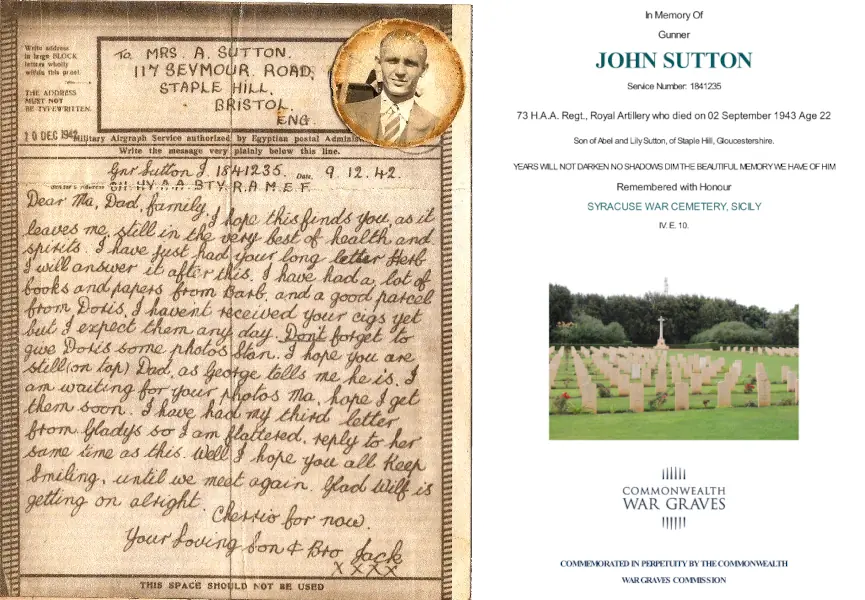
John Sutton, letter and grave
Do you have any information about his last movements and the circumstances of his death. His death certificate registers the cause of death as drowning on 2 September 1943, but this was recorded the day before the main invasion, so we wondered if maybe his landing craft was shelled or torpedoed or there was an incident in the port?
Sources and Resources
Derek Driscoll's original pages
Other Resources
1st Wiltshire Battery, Royal Field Artillery - Wikipedia
City of Bristol Rifles - Wikipedia
Kerrison Predictor - Wikipedia
